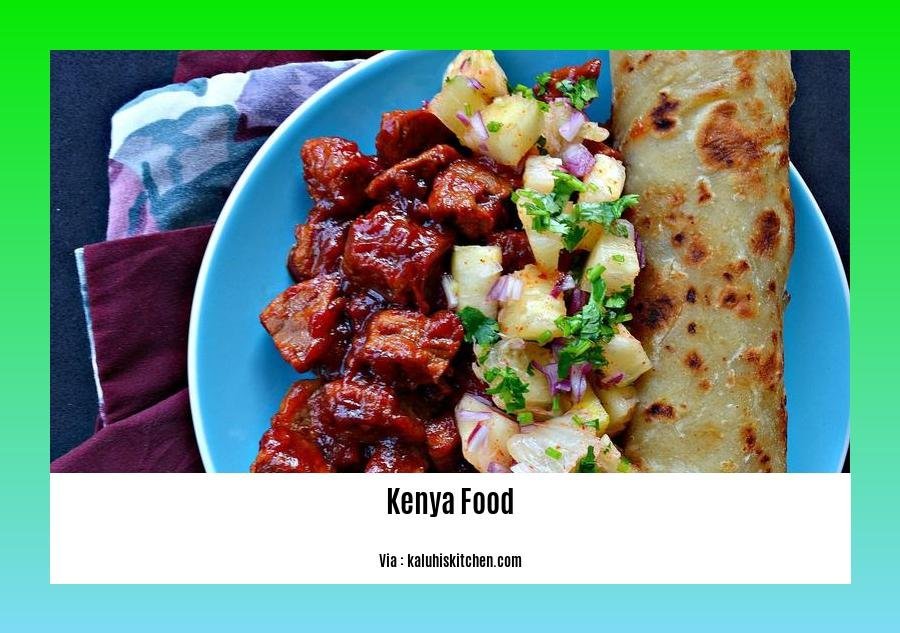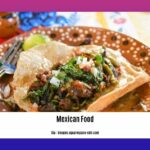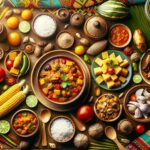Embark on a captivating culinary journey through Kenya with “Facts about Kenya Food: A Culinary Journey Through Kenya’s Diverse Flavors.” Discover the hidden gems of Kenyan cuisine, from the vibrant street food markets to the exquisite fine dining experiences. Join us as we explore the unique flavors, ingredients, and cooking techniques that make Kenya’s food culture truly exceptional.
Key Takeaways:
- Kenya’s diverse cuisine reflects the influence of its geography, immigration, and trade.
- Ugali, sukuma wiki, and nyama choma are popular dishes throughout the country.
- Maize, beans, vegetables, and fruits are staple foods in Kenya.
- Kenya’s coastal cuisine is renowned throughout the country.
- Tea is the preferred beverage for many Kenyans, with chai masala being a popular choice.
- Kenya is the world’s third-largest tea producer after China and India.
Facts about Kenya Food
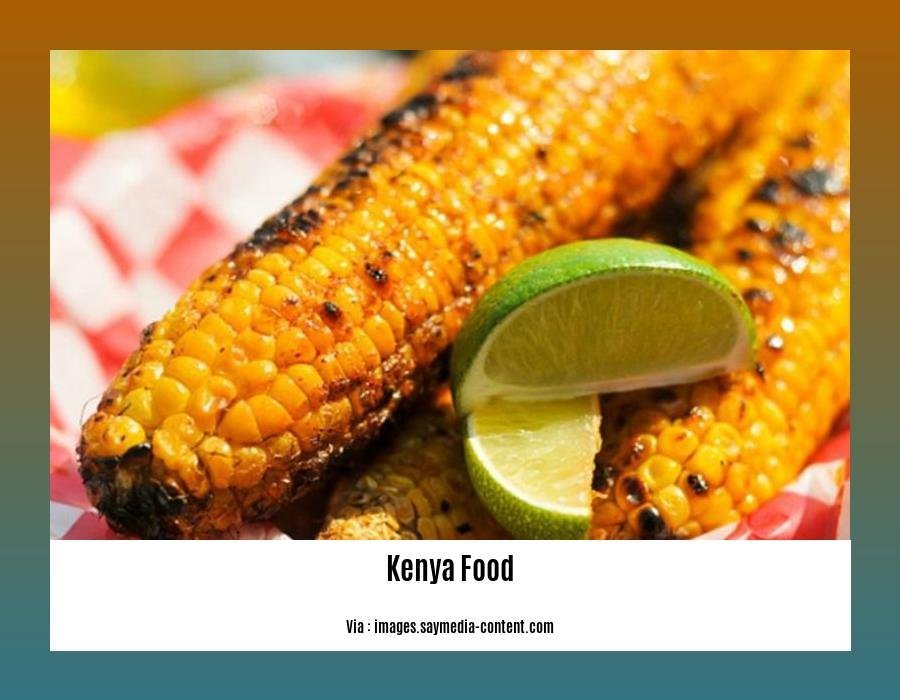
Did you know Kenya’s diverse cuisine is a reflection of its vibrant history and cultural influences? Let’s dive into some fascinating facts about Kenyan food!
Diverse Culinary Heritage
Kenya’s cuisine is a delightful tapestry of flavors, influenced by its location and history of immigration and trade. From the coastal regions to the inland plateaus, each region boasts unique culinary traditions.
Staple Foods
Kenyan staples include grains like corn, millet, and sorghum, paired with beans, vegetables, and fruits. These ingredients form the foundation of many beloved dishes, such as ugali, sukuma wiki, and nyama choma.
National Favorites
Ugali, a maize flour porridge, is a national favorite and a staple accompaniment to many dishes. Sukuma wiki, a sautéed collard greens dish, and nyama choma, grilled marinated meat, complete the trio of universally loved Kenyan dishes.
Coastal Delights
Kenya’s coastal cuisine stands out with its unique blend of flavors. Seafood takes center stage, with dishes like coconut-infused pilau (spiced rice) and aromatic curries showcasing the region’s culinary prowess.
Tea Nation
Kenya is the world’s third-largest tea producer, after China and India. Kenyans love their tea, with chai masala, a spiced milk tea, being a popular choice. Tea plantations dot the country’s highlands, contributing to Kenya’s reputation for producing some of the finest teas globally.
Local Food Systems
Kenya’s food systems prioritize sustainability and local sourcing. Farmers’ markets and small-scale agriculture play a vital role in ensuring access to fresh, seasonal produce.
Culinary Experiences
Food in Kenya is more than just nourishment; it’s a cultural expression. From vibrant street food markets to high-end restaurants, there are countless ways to experience Kenya’s culinary delights.
Remember, these facts just scratch the surface of Kenya’s rich food culture. Dive deeper into this culinary paradise, and you’ll discover a world of flavors that will tantalize your taste buds and leave you craving for more.
-
Learn more about the German culture and its unique traditions by clicking here: Facts about German culture.
-
Indulge your taste buds with the exquisite flavors of Greek cuisine. Explore the culinary delights of Greece here: Facts about Greece food.
-
Uncover the rich history and vibrant culture of Islamabad, the capital of Pakistan. Discover the fascinating facts about Islamabad: Facts about Islamabad.
Use of local ingredients: Kenyan cuisine heavily relies on fresh, locally grown ingredients, including tropical fruits, indigenous vegetables, and spices, which contribute to its unique taste profile.
Kenya’s culinary tapestry is a captivating blend of flavors, colors, and aromas, and at its heart lies a deep connection to local ingredients. Kenyan cuisine is a symphony of fresh, locally grown produce, a testament to the country’s rich agricultural heritage.
Imagine biting into a succulent mango, its sweet flesh bursting with tropical sunshine, or savoring the earthy sweetness of indigenous vegetables like amaranth (terere) and spider plant (saget). These ingredients, deeply rooted in Kenya’s soil, bring a unique taste profile to every dish.
Kenyan cuisine is a testament to the country’s diverse climate and topography. From the coastal regions, with their bounty of seafood and coconut palms, to the lush highlands, where tea plantations thrive, every region contributes its own culinary treasures.
The coastal cuisine, influenced by centuries of trade and cultural exchange, features dishes like coconut-infused pilau and aromatic curries, a blend of Swahili and Arabic flavors. In the highlands, fresh trout from mountain streams and tender beef from local farms take center stage, often paired with hearty sides like ugali, a maize flour porridge that’s a staple in Kenyan households.
Kenya’s rich biodiversity extends to its spices and herbs, adding depth and complexity to dishes. Coriander, cumin, turmeric, and chili peppers are just a few of the spices that add their magic to Kenyan cuisine, creating a harmonious balance of flavors.
Key Takeaways:
- Kenyan cuisine showcases the country’s diverse climate and topography through its use of locally grown ingredients.
- Local ingredients like tropical fruits, indigenous vegetables, and spices contribute to Kenya’s unique taste profile.
- The coastal cuisine blends Swahili and Arabic influences, while the highlands offer dishes featuring fresh trout and beef.
- Spices and herbs like coriander, cumin, turmeric, and chili peppers add depth and complexity to Kenyan dishes.
Sources:
– Chef Reader
– Go Backpacking]
Regional variations: The diverse regions of Kenya offer distinct culinary experiences, showcasing the influence of local culture, geography, and traditions on food preparation and flavors.
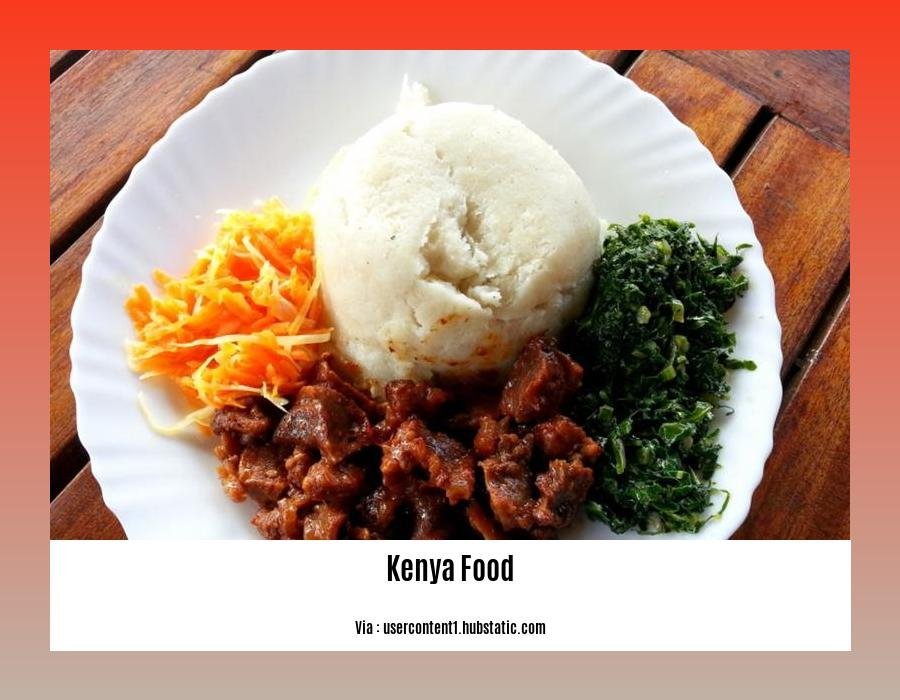
Kenya’s culinary landscape is a testament to its rich cultural diversity, with each region boasting unique flavors and dishes that reflect local traditions, geography, and history.
-
Coastal Cuisine: The coastal region, influenced by centuries of trade and cultural exchange, offers a diverse array of seafood dishes, fragrant spices, and coconut-infused delicacies.
-
Central Kenya: This region is renowned for its hearty stews, grilled meats, and vegetable dishes, often accompanied by the staple ugali, a maize flour porridge.
-
Western Kenya: Western Kenya’s cuisine is characterized by its use of fresh produce, vibrant colors, and bold flavors, with dishes like mukimo, a mashed potato and green vegetable dish, taking center stage.
-
Rift Valley: The Rift Valley’s diverse communities have created a cuisine that blends traditional dishes with influences from neighboring regions, resulting in a rich tapestry of flavors and textures.
-
Northern Kenya: The arid northern region offers unique culinary experiences, with dishes that reflect the nomadic lifestyle of the region, including camel milk, grilled meats, and millet-based dishes.
Key Takeaways:
- Regional Variations: Kenya’s diverse regions offer distinct culinary experiences that reflect local culture, geography, and history.
- Coastal Influence: The coastal region’s proximity to the Indian Ocean has influenced its cuisine, with seafood, spices, and coconut playing prominent roles.
- Central Kenya’s Staples: Ugali, a maize flour porridge, and hearty stews are staples in Central Kenya’s cuisine.
- Western Kenya’s Freshness: Western Kenya’s cuisine emphasizes fresh produce and bold flavors, with dishes like mukimo showcasing the region’s vibrancy.
- Rift Valley’s Diversity: The Rift Valley’s cuisine is a blend of traditional dishes and influences from neighboring regions, reflecting its diverse communities.
- Northern Kenya’s Uniqueness: The arid northern region’s cuisine is distinct, with dishes like camel milk and millet-based dishes reflecting the nomadic lifestyle.
Sources:
– Kenyan Food: 28 Traditional Dishes to Try – The Roaming Fork
– Exploring Culinary Delights: Indulge in the Vibrant Food Culture of Kenya – eVisa Kenya
Influence of external cuisines: Kenyan food has been influenced by a blend of external cuisines, including Arab, Indian, and British influences, leading to a rich fusion of flavors and cooking techniques.
Kenyan cuisine is a vibrant tapestry of flavors, a testament to the country’s rich history of cultural interactions and trade. External influences have played a significant role in shaping Kenya’s culinary landscape, with Arab, Indian, and British cuisines leaving an indelible mark on the nation’s food culture.
The Arab influence is particularly notable in the coastal regions of Kenya, where dishes like pilau, a flavorful spiced rice dish, and samosas, triangular pastries filled with spiced fillings, are popular. These dishes reflect the historical trade ties between Kenya and the Arab world, which brought not only spices and ingredients but also culinary techniques and traditions.
Indian cuisine has also had a profound impact on Kenyan food, especially in the form of flatbreads like chapatis and mandazis, which are ubiquitous street foods. The use of lentils, spices like cumin and coriander, and coconut milk in Kenyan dishes is also a nod to the strong Indian influence.
The British colonial era introduced new ingredients and cooking methods to Kenya, which were gradually incorporated into local cuisine. Vegetables like carrots, potatoes, and cabbage became more widely used, and the British love of tea led to the establishment of tea plantations in Kenya, making the country one of the world’s leading tea producers.
The result of these diverse influences is a cuisine that is uniquely Kenyan, a harmonious blend of flavors and traditions that reflects the country’s multicultural heritage.
Key Takeaways:
-
Arab influence: Pilau, samosas, use of spices and ingredients from the Arab world.
-
Indian influence: Chapatis, mandazis, use of lentils, spices, and coconut milk.
-
British influence: Introduction of vegetables like carrots, potatoes, and cabbage, establishment of tea plantations.
-
Fusion cuisine: Kenyan cuisine is a rich fusion of flavors and techniques from different cultures, creating a unique culinary identity.
Sources:
-
Kenyan Food: 28 Traditional Dishes to Try – The Roaming Fork
-
Exploring Culinary Delights: Indulge in the Vibrant Food Culture of Kenya – eVisa Kenya
FAQ
Q1: What makes Kenyan cuisine so distinct?
A1: Kenyan cuisine is distinguished by its diverse influences, including traditional African flavors, Arab spices, and Indian culinary techniques, resulting in a unique blend of flavors and ingredients.
Q2: What are some common ingredients used in Kenyan cooking?
A2: Kenyan cuisine heavily utilizes fresh, locally sourced ingredients, such as maize flour, beans, collard greens, potatoes, and a variety of spices, including cumin, coriander, and chili peppers.
Q3: Which dishes are considered staples in Kenyan cuisine?
A3: Staples of Kenyan cuisine include ugali, a cornmeal porridge, sukuma wiki, a collard greens dish, chapati, a flatbread, and nyama choma, grilled meat. These dishes are widely enjoyed and often served with stews, vegetables, or beans.
Q4: What are some popular Kenyan dishes that showcase coastal influences?
A4: Coastal Kenyan cuisine is renowned for its unique flavors, which blend Arab and Swahili influences. Popular dishes include pilau, a spiced rice dish, coconut-based seafood stews, and samosas, fried pastries filled with spiced vegetables or meat.
Q5: What beverages are commonly enjoyed in Kenya?
A5: Tea is the most popular beverage in Kenya, and the country is renowned for its high-quality tea production. Chai masala, a spiced tea, is a favorite choice, along with fresh juices, such as mango and passion fruit, and traditional fermented milk drinks like mursik.
- Unveiling the Enigma: Mansoureh Khojasteh Bagherzadeh’s Public Appearances & Private Life in Iran - July 18, 2025
- Unveiling the Mystery: Mansoureh Khojasteh Bagherzadeh’s Husband: A Rare Glimpse into a Private Life - July 18, 2025
- Unveiling Masoud Khamenei’s Mother: Power, Influence, and Iran’s Future - July 18, 2025
